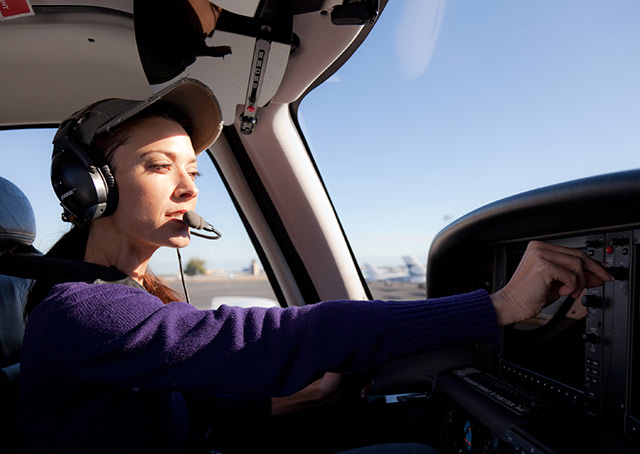
As your preparation for your practical test proceeds, attention to detail in routine operations counts. A well-prepared, well-practiced flight test applicant can create a positive impression on a designated examiner long before you head to the practice area to demonstrate slow flight, stall recoveries, and steep turns.
This morning you have preflighted your trainer and accomplished engine start. You request taxi clearance from ground control, being sure to “state your position on the airport” as the Aeronautical Information Manual recommends.
The controller acknowledges your call sign—consisting of three numbers followed by two letters—and clears you to taxi to the runway.
How should you acknowledge this clearance? Should you respond with the aircraft’s full call sign? Or is it acceptable to provide an abbreviated version, as you hear pilots doing during most days’ flying?
Showing by your actions that you know the answer is a great way to show your examiner that you are a pilot who "does the homework."
Use your full call sign. When is it acceptable to abbreviate?
Air traffic control may initiate abbreviating your call sign "by using the prefix and the last three digits/letters of the aircraft identification after communications are established. The pilot may use the abbreviated call sign in subsequent contacts with the ATC specialist," explains AIM Section 4-2-4.
Another important but sometimes omitted communications technique is the readback of clearance elements. Getting it right the first time reduces everyone’s workload and advances the goal of clarity in communications.
If a pilot omits a required readback item in a taxi clearance, a prompt from ATC is sure to follow. "When taxi instructions are received from the controller, pilots should always read back: (a) The runway assignment. (b) Any clearance to enter a specific runway. (c) Any instruction to hold short of a specific runway or line up and wait. Controllers are required to request a readback of runway hold short assignment when it is not received from the pilot/vehicle."
Here’s a quick quiz: When calling up with your Cessna 152 trainer’s full call sign—let’s say it is N112DN—do you transmit it as “Cessna November One One Two Delta November” or do you drop the November from the beginning of the call sign?
Find the answer in AIM Section 4: “When the aircraft manufacturer’s name or model is stated, the prefix ‘N’ is dropped.”



